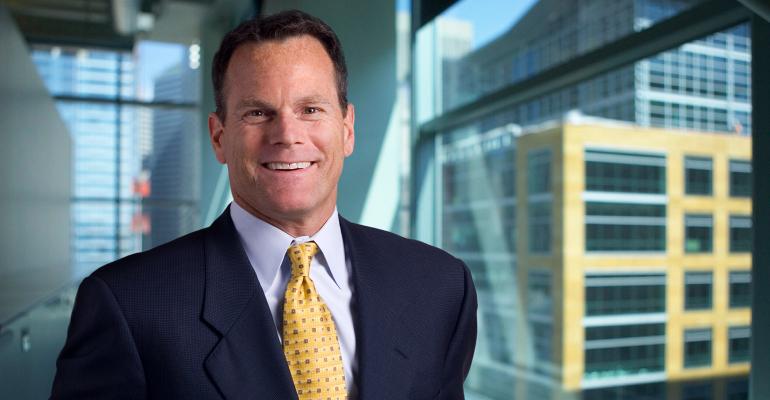Charles Schwab’s recently announced integration with Orion may be the tip of the iceberg for Andrew Salesky’s tenure as head of advisor technology at the discount brokerage. The former chief data officer has been at Schwab for 23 years and expects to be a little louder than his predecessor, Ed Obuchowski, when it comes to the firm’s technology. Salesky received his promotion in May, after Obuchowski left the firm to be named chief technology officer at Advisor Group.
Salesky described a lockstep approach to innovation between himself, Neesha Hathi, Schwab’s chief digital officer, and Bernard Clark, head of advisor services. “We had been too quiet regarding our technology strategy,” he said. Schwab’s third-party ecosystem had been getting a bad rap, “painted, unfairly, as being closed.”
To correct that, the executives in charge of the company’s technology realized that the firm needed to be “broader in scope, while pursuing depth.” Salesky laid out a roadmap for the company that he said will balance an advisor’s need for security and choice in the rapidly growing third-party environment, while expanding the number of integrations Schwab can support.
“Yes, you will see more integrations,” Salesky said, “it’s not a numbers game, though.” He’s aspiring to double the integrations available with Schwab by the end of 2019, up from 50 or so today.
Part of Schwab’s strategy will be to rely on its twin accelerator centers in Austin, Texas and San Francisco. New innovation at the centers is currently divided between the retail and advisory channels, with development occurring in iterative two-week bursts, more closely mimicking the “design thinking” that’s been a hallmark of Silicon Valley. Advances are demoed to clients, and developers are instructed to focus on workflows, rather than coming up with digital versions of paper.
On the retail side, Salesky said the centers are aiming to launch a minimum viable product by the end of the year that would streamline client onboarding. The firm is also working on a product to assist with required minimum distributions.
New technology in the “rapid, creative development” phase for advisor services revolves around a new onboarding process for advisors bringing their business to Schwab. Salesky described wanting to come up with a “turnkey” solution for batch-processing a large number of accounts that a new advisor might bring in—a process that is currently too cumbersome, he said.
Much has been made of the advantages of building from scratch, but Schwab has the best of both worlds, according to Salesky. “Legacy isn’t necessarily all bad,” he said. “We aspire to leverage scale and cater to the different needs of a diverse clientele.”
Although the firm’s infrastructure is “mainframe technology,” Salesky noted that developers aren’t mandated to build from it. That is, they can code something from scratch if they need to. He cited Amazon as a company that’s done a good job of building a straight-through workflow, noting that clients’ expectations of financial services are being shaped from both inside and outside of the industry.
Schwab continues to face the same challenge it has for a number of years. It has to innovate while dragging along its legacy systems. One of those foundational elements, at this point, is its multi-custodial support. “We’re not walking away from multi-custodial support,” said Salesky. Any reports that the company is “sunsetting” its PortfolioCenter portfolio management application are incorrect, he added.
Instead of scrapping previous developments, Schwab tends to find new uses for them, or build increased functionality into existing tools. The company’s end client portal, Alliance, has seen criticism from advisors for its lack of demo capabilities or co-browsing functionality. Developers at the firm were working on ways to bring those features to the tool, said Salesky. The firm is also focused on bringing new improvements to Portfolio Connect in the first half of 2019.
While it’s clear a transition is in progress, Salesky’s history at the firm is linked to new business strategies and turnarounds. He was involved with Schwab’s first fee-based advice offering and developed the company’s Advisor Network. When the 2011 financial advisor franchise roll-out got off to a slow start, he took over and guided the initiative to a more stable footing.
In the midst of a crowded and well-financed technology scene, not to mention an advisory channel that is increasingly fragmented as advisors go independent and explore new business models, Schwab’s head of advisor technology will be put to the test.





